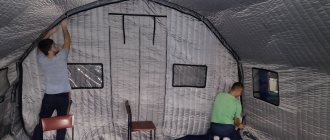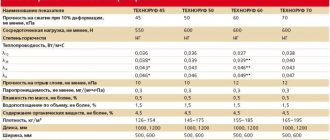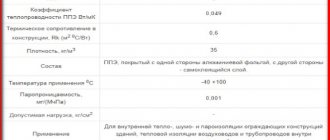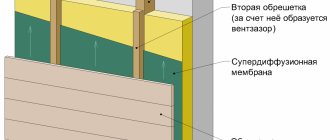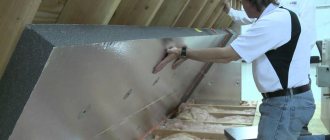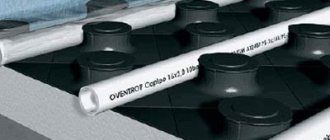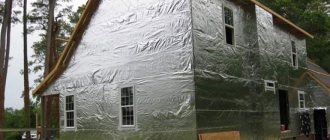What is this technology
The beaches of the Mediterranean Sea are covered with seaweed called Posidonia Oceanica. Previously, this plant was collected and simply disposed of. However, relatively recently it was found that it can do a good job of insulation. As a result of certain treatments, this plant material acquires all the necessary qualities to create an insulating layer.

Upon a detailed study of this issue, it was found that a similar technology has been used for several centuries. Residents of coastal areas in warm countries actively dry up seaweed and use it to decorate the roof and walls of houses.
Today, organic raw materials are processed using high-tech equipment. In general, the production methodology is as follows:
- The harvested algae are dried at a certain temperature.
- Then they are placed in a special harvester that provides a very intense shaking. As a result, sea sand is separated from the fibers.
- The cleaned raw material goes under the cutting machine, which crushes it into fibers several centimeters long.
- At the end, the raw material is separated into fractions and sent to packaging. Most often, rolls are created by pressing and then tying them with strong threads (like glass wool).
Today practically no one makes such heaters on their own, since this is an extremely difficult and burdensome operation. Nevertheless, if you wish, you can implement a similar technology at home, if you have basic equipment.
Key features of natural heat insulators
Further, in the most objective form, the pros and cons of this organic insulator will be considered.
Dignity
This material, to the surprise of many experts, has very useful properties. Adding modern technologies to them, a good insulation was obtained, which has the following list of advantages:
- Absolute environmental friendliness. This is the main "trump card" of such materials. They are completely safe even for children and people suffering from various allergic diseases. Buildings completely finished with such an insulator are breathable, that is, the natural air balance is maintained.
Important! Even when burning, algae do not emit any harmful substances.
- Does not attract rodents and insects. Surely many are familiar with the problem when mice or rats gnaw through a heat insulator (this is especially true for foam). This forces additional protection measures to be applied. Seaweed is not attractive at all. Moreover, due to the high content of iodine, calcium and some other substances, they even scare away such animals.
- Durability. The natural chemical balance ensures a fairly long service life. However, this is typical only under normal conditions, that is, when various layers are organized and no critical temperature amplitudes or high humidity are observed.


disadvantages
On the websites of manufacturers you can find a lot of information about how effective and practical such heaters are. However, they also have their own serious disadvantages, which in most cases are silent:
- Flammability. Despite the manufacturers' assurances of fire resistance, the dried algae materials burn quite well. Therefore, their use is unjustified from a safety point of view.
- Average thermal conductivity.Such materials belong to class B thermal conductivity (according to Russian GOST). This means that their efficiency is 2-3 times lower than that of "brothers" from class A. Therefore, to create reliable thermal insulation, you will have to increase the thickness of the layer, which is not always justified (especially when it comes to internal insulation, because in this case useful area of premises).
- Poor moisture resistance. In conditions of increased condensation, the thermal insulation will lose its properties, which will reduce its effectiveness. Therefore, it is necessary to create an additional layer of moisture insulation, which is not very rational from an economic point of view.
Stating the above facts, we can state that such a technology is relevant only for regions with a warm climate, because in more severe conditions it will be necessary to create an impressive layer in thickness. She also needs very careful protection from moisture and fire. The use of algae insulation looks reasonable only if the most important criterion for a person is the environmental friendliness of materials. This is true, for example, for people suffering from allergies or respiratory diseases. In all other cases, the use of this ecological insulator is unjustified.


Linen
There are several types of linen insulation, differing in structure and ratio of components. Borax is used as a fire retardant, the addition of starch allows the fibers not to deform.
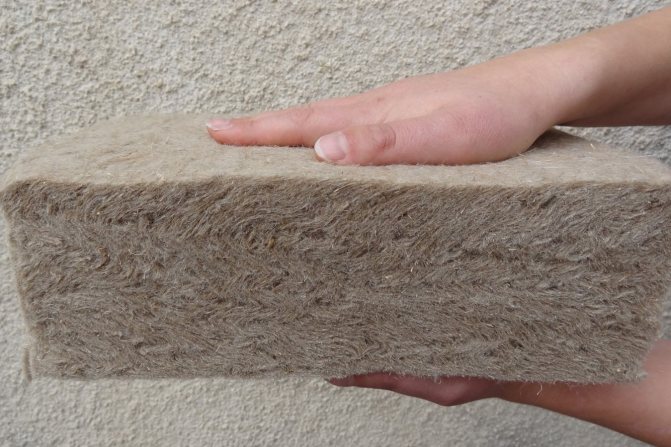

There are different types of material on sale:
- Tow. The shape is convenient for sealing cracks, insulating window openings. However, it needs additional protection from moisture, since the tow is prone to rotting.
- Felt. It does not deform, it is easy to use, it is produced in rolls. Necessarily contains protection against fire - the felt is flammable.
- A mixture of flax and jute, usually in a 1: 1 ratio, resistant to moisture and microorganisms.
- Batting. Ecological insulation is used for floors, walls, ceilings, ceilings.
- Linen stoves. They are not subject to shrinkage, the service life reaches 60 years.
It is convenient to use linen for a wooden house, it is suitable for construction and reconstruction works. Linen insulation is close to wood in structure and properties, it will preserve the microclimate of the building. It is suitable for rooms with high humidity - baths, baths - since the capillary structure of the material helps to remove moisture.
Application Tips
Despite their unusual natural origin, algae insulators are installed using the same technology as mineral wool mats. However, there are a few nuances to be aware of.
- For floor and ceiling finishes, it is recommended to use models sold in bales, that is, loose. It is in this form that the insulator has maximum efficiency, since it allows you to fill absolutely all the space, while leaving a layer of air.
- Be careful when cutting the mats. Organic materials are not very strong, so you can only cut along the fibers or next to the threads that run through the entire structure of the mat and ensure its integrity. At the same time, it is extremely undesirable to cut them, since in this case the roll will simply fall apart.
- As mentioned above, when using any organic insulation, a waterproofing layer is required. In this case, the most rational solution is a moisture-proof membrane. It not only provides protection against condensation, but also allows the walls to remain "breathable".
- In areas with severe winters, it is not advisable to use organic matter for outdoor insulation. As a result of the influence of low temperatures, it will begin to collapse.
What algae are used for thermal insulation
For the production of heaters from algae, two types of sea grass are used - sea scum and dwarf scum.They are collected and harvested on the Black Sea coast, while the algae are thoroughly dried. The popular name of this material is damask.
Blackfish (lat.Zostéra marína) is a perennial herb that grows in the coastal waters of warm seas. Its branched root system forms real meadows under water with a lush cover reaching a meter in height. Blossom flowers are pollinated under water, with the help of water streams that carry pollen.
Such unusual and harsh conditions for plant life contributed to the fact that the grass acquired a number of unique biochemical characteristics.
The plant is used in medicine, furniture and food industries. It is used for packaging and filling for mattresses and pillows. In some countries, this algae is used to make roofs similar to thatch. They are lightweight and durable. The leaf width is about 6 mm.
Algae filler composition
For filling blankets and pillows, seaweed can be used either in its pure form or in combination with some kind of insulation. Most often, heat-set eucalyptus fiber or synthetic fluff is added to seaweed. Eucalyptus fiber is one of the most environmentally friendly fillers, and in combination with seaweed has a general strengthening effect on the human body. The production of padding polyester, like the production of padding polyester, is made of hypoallergenic polyester fiber. Bedding with synthetic fluff is warm and light and can be used for allergies or asthma.
Also, seaweed is used as a filler for mattresses, for this they are intertwined with a mesh base. They are resistant to decay and mechanical stress, so this mattress can be used for a long time. During sleep, iodine vapors are released from the algae, which have a healing effect on the human nervous system.
Next article on the topic: "Synthetic fiber"
The main qualities of the insulation from seaweed ↑
Belonging to the underwater world contributed to the fact that kamka acquired the following properties:
- Environmentally friendly and hypoallergenic. The high iodine content not only saturates the human body with this microelement without the risk of overdose, but also ozonizes and disinfects the air.
- Fire safety. The combustion efficiency of the sea grass is zero. Silicon, contained in it in high doses, makes such algae insulation a non-combustible material, more precisely, hardly flammable. Once on fire, the dried algae will simply collapse without causing the fire to grow.
- Non-toxic. The naturalness of the material excludes the release of poisonous gases and toxic substances during smoldering.
- Durability. Properly harvested damask retains its quality characteristics for 150 years. This is evidenced by the conclusions of Danish experts from the architectural firm Vandkunsten.
- Practicality. Over time, the material acquires water-repellent properties. Due to the content of tannins, seagrass does not cause rotting or drying out of the elements of the roof that are in contact with it, and is not susceptible to the effects of destructive fungi.
- High thermal conductivity. Algae insulation belongs to the medium thermal conductivity (class B) thermal insulators. This has been proven during tests carried out by the Simferopol Academy of Environmental and Resort Construction at the Department of Chemistry of Building Materials. Subject to a certain level of humidity (16-24%) and density (80-90 kg), the thermal conductivity of the material is 0.087 W.For concrete, for example, this indicator is equal to one; mineral wool has a similar parameter. At the same time, the scum is lighter than both of them.
- Sorption properties. The moisture absorption is about 30%. For comparison, synthetic heat insulators have an indicator of only 0.3 - 0.7%. This is another plus in favor of fire safety. And also proof of the ability to regulate humidity in a room and create an optimal microclimate for humans. It does this by absorbing and then releasing the accumulated liquid in dry air.


Such a natural algae insulation protects the building from drafts and has good sound insulation. Due to its long stay in sea water, it is not exposed to mold.
An added bonus is that the calcium and sodium salts contained in dried algae are excellent at repelling mice and insects. This is especially true for private homes, sheds and cellars.
Insulation and sound insulation in mats
Flax fiber allows you to achieve optimal moisture-thermal conditions. Linen insulation is able to absorb (absorb) excess moisture in the room, and at the time of its shortage, bring it out without any loss of thermal and physical properties. In addition, flax has high biocidal properties.
The main advantage of the flax-based material is its absolute environmental safety, since no adhesives, resins or other toxic additives hazardous to humans and the environment are used in its production.
Skamorn (lat.Zostéra) - belongs to the genus of perennial sea grasses of the Vzmornikovye family. This is an environmentally friendly material that has long been known to man. Pillows and mattresses were made from the scum, they were used to insulate houses - they caulked cracks, lined the underground and the attic.
Rodents and insects do not start in a scum. Iodine creates unacceptable conditions for their habitation. Coarse fiber, strong and resilient stems (the material is very durable) prevents insects from destroying or using seagrass as food. The skimmer helps to keep the heat in the room in the cold and keep it cool in the summer. Another feature of the scummer is that it does not burn.
Thanks to its unique properties, sea grass helps to create and maintain an environmentally friendly atmosphere in your home for many decades.
Jute is one of the fibrous plants of the linden family. It grows in the subtropical regions of Asia. The main property of jute fiber is its hygroscopicity. Bags are made from jute that perfectly absorb moisture, but do not let it inside. Jute is also used to create composite plastics that retain the breathability of jute fibers. An example of the use of such plastics is packaging of tea, coffee, etc. Also, ropes, carpets, shoes, geotextiles, young shoots and leaves are used for food from jute.
Jute fiber decomposes in the soil. This enriches the soil with organic matter and helps to increase crop yields. And when burned, its vapors do not emit any harmful substances.
Hemp (hemp fiber) as a plant, it belongs to the group of antiseptics. She found wide application in everyday life (production of fabrics, ropes), medicine (for the treatment of insomnia, multiple sclerosis, malaria and fungal diseases) and construction. Hemp makes strong and durable products. Hemp is grown without the use of pesticides, which means there is no decay and mold.
Lavsan - polyester fiber obtained from oil refined products.Lavsan is lightweight, resilient, resistant to decay, mold, acids and alkalis. In this case, it acts as a binder and molding component.
The fibers that make up Flaksan insulation perfectly complement each other. As a result, we have obtained a durable, healthy and, at the same time, non-combustion insulation for walls, interfloor ceilings, roofs and floors.
Options and types of thermal insulation materials ↑
Manufacturers offer to purchase sea grass in several forms. Having weighed all the pros and cons, such as the ratio of price, ease of installation and practicality during operation, choose the best option from three possible ones.
Finished heat-insulating plates such as "Fitoizol" or "KamkaS" ↑
The most technologically advanced and easy-to-use form with the price corresponding to the invested labor.
The popular Fitoizol insulation boards on the market are produced by the thermal bonding method, which binds natural and polyester fibers into a single mass. The board consists of 85% prepared algae and 15% organic silicone or casein glue as a binder. Density - 20-50 kg per cubic meter.
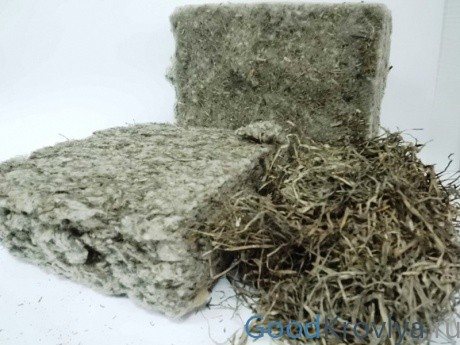

Has the following advantages:
- high performance due to an optimally balanced composition;
- easily cut into pieces of the desired size;
- resistance to weathering and stalling;
- a large selection of slabs of different thicknesses and densities, varying depending on the place of intended installation;
- ease of use: you can choose a ready-made insulation not only for the roof, but also for walls, walls, floors.
Insulation made of algae in the form of slabs is suitable for insulating the internal structures of buildings for any purpose. The standard slab size is 1200x600.
Heat-insulating mats in a grid ↑
This is a good option, but it requires knowledge to help you make the right choice. Otherwise, you can be disappointed later. A high-quality thermal insulation mat should:
- have a weight of 12-14 kg, with a size of 1000x2000x100, otherwise, you pay for air;
- be well packed, otherwise a half-empty mesh will reach the end user from the manufacturer: weak packing is 20-30% of filling losses during multi-stage loading and unloading operations;
- have cells equal to 80x80, 100x100, 150x150, stitched with high-quality nylon thread.


Insulation in mesh mats is a good product, but you should choose it carefully, avoiding dubious manufacturers.
Important! If it is necessary to adjust the size, it is rather difficult to separate such mats. They run the risk of falling apart, so installation will require skill and patience.
Dry seagrass by weight or in bulk ↑
Such algae insulation is produced in pressed rolls or in bales and sold by weight. This is the most budgetary option, which is quite convenient for handling, transportation and storage. The savings of as much as 25% is justified by the fact that the production of this form does not involve the work of knitters, and also does not use threads, as in other options.
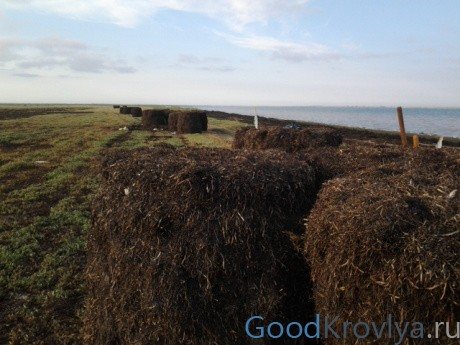

However, they buy loose damask not only for the sake of economy, such insulation can be used in non-standard situations and without thinking about the configuration and size of the insulation area.
An important point during installation is the tightness of the packing. Otherwise, you can get an eco-friendly, but cold home.
Popular natural insulation
Linen
Linen is used for thermal insulation of external walls, roofs, partitions and ceilings. Flax seed (lignified parts of plant stems) has long been known as a good insulation material. Modern products are more technological - they are linen felt and rolls of tape tow. Insulation mats and boards of various sizes and thicknesses of 50 and 100 millimeters are produced from short flax fiber.
Due to its natural origin, the material can be used for internal sound insulation and insulation.The service life of linen thermal insulation is 70 years and more.
Linen retains heat well, and passes water vapor well. When wet, it is able to dry quickly. Flexible and plastic material is easy to work with.
The material is produced and completely natural, without any additives. But more practical is insulation, which consists of about 85% of flax fiber and 15% of a binder. The latter can be starch-based components or artificial fibers that are safe for humans, for example, polyester.
Flax is a combustible material. The issue of increasing the fire resistance of the material is solved by manufacturers in different ways. The most common options are the addition of boron salts during the manufacturing process or surface treatment with fire retardants.
Hemp
Hemp insulation is similar to linen and has similar properties: it retains heat well, does not emit harmful substances. In addition, hemp is a well-known natural antiseptic. The use of hemp as a heater not only creates a favorable microclimate in the house, but also helps to protect the structures of the house from rotting and the appearance of mold, fungus and insects.
In the old days, hemp was often used for insulation, but in our country the industrial cultivation of hemp is prohibited, so only German insulation in rolls and slabs of different thicknesses and sizes can be found on sale. In terms of its performance, hemp insulation is not inferior to flax.
Ecowool
Ecowool is a collective name for such a category of materials as cellulose insulation. The advantages of the material are that it is environmentally friendly, does not rot, is fire resistant, and keeps heat well. Ecowool is produced by recycling waste paper and adding additives such as antiseptics, binders and flame retardants to the mass - substances that impede combustion.
Refers to environmentally friendly materials. Contains additives of mineral compounds of boron, which give it antiseptic properties and resistance to fire. It looks like a light, loose mass. It is applied to the surface to be insulated using a blow molding machine. Prepared cavities are filled with material, it easily penetrates into hard-to-reach places.
Cellulose wool can be used to insulate any house structure: floors, walls, internal partitions and pitched roofs.
The disadvantages include the following. Ecowool is not recommended for use in rooms with high humidity, as it is hygroscopic. It is often inconvenient to insulate vertical walls with bulk material. The material can cause allergies, especially for people with book dust intolerance.
Wool
This thermal insulation material contains new and recycled sheep wool. It is produced in the form of a woolen cloth with a thickness of 20 to 120 millimeters of various densities. At high humidity, it can absorb water about 30% of its dry weight, then releases it. This creates a comfortable indoor climate and eliminates the need for a vapor barrier film.
Wool felt is suitable for thermal insulation of walls, partitions, ceilings, the space between the rafters and in the construction of frame-panel houses. The material is attached to the wooden frame with a construction stapler.
Manufacturers add insect repellent to wool. In addition, imported insulation is treated with fire retardants. There are no such additives in the domestic material, so it is more environmentally friendly.
The disadvantages of woolen insulation include its allergenicity. Before using it, be sure to make sure that all family members are not allergic to wool. It often manifests itself gradually, eventually leading to asthma.It is useful to pay attention to the presence of an allergy to cat hair - this is an alarming signal when choosing a heater.
Fiber boards
Soft fibreboard is a natural, environmentally friendly building material that has found wide application in low-rise construction for arranging sound insulation and building insulation. They are made from shavings and other wood waste. Due to their low thermal conductivity, good vapor permeability and high strength, soft boards are not only an excellent heat insulator, but also a good finishing material that is easy to install. In addition, it is easy to handle with conventional wood tools.
Such plates do not change their structure, they are not afraid of fluctuations in the relative humidity in the room, they do not deform and do not shrink.
A distinctive feature of soft wood board is the absence of glue and other chemical binders in its composition, as in conventional fiberboard. In the manufacturing process, pulp, which is obtained by crushing wood chips, is mixed with water, then pressed and dried.
Also, the plates do not contain formaldehyde and other harmful synthetic additives. Thanks to this, the insulation is considered safe to use, even for people prone to allergies.
The disadvantages include problems with the insulation of niches, communication connection points and hard-to-reach places.
Bung
Cork insulation is made from the bark of the Mediterranean cork oak, which grows in Portugal. The milled bark is treated with hot steam, mixed with natural cork resin and pressed into molds.
Then they are cut into plates. The porous structure provides good thermal insulation and breathability, and the resins provide resistance to decay and mold.
Lightweight cork boards are easy to install and cut well. The material is used for both external and internal thermal insulation of buildings. The facade insulated with a cork slab can be plastered. Cork panels can also be used simply for finishing floors and walls.
Damask
Kamka is an organic material made from seaweed. This plant is common in the Black Sea.
Kamka is a good heat insulator, due to the high content of sea salts, it almost does not rot, does not lose its properties when wet and almost does not support combustion. With high humidity, the damask picks up excess moisture from the room, and with dry air, on the contrary, moisturizes it.
It is one hundred percent environmentally friendly material. In addition, damask releases iodine into the air, which has a beneficial effect on the respiratory and nervous systems.
Harmful insects and rodents do not start or live in it, due to the high content of calcium salts. He does not like mechanical influences, breaks down and turns into dust.
Features of laying plant thermal insulation ↑
The seagrass, produced in the form of slabs and mats, is selected and installed based on the recommendations of the manufacturers outlined in the instructions. The material is soft and pliable during installation. To lay the damask purchased by weight, you should follow some of the recommendations and tips below.
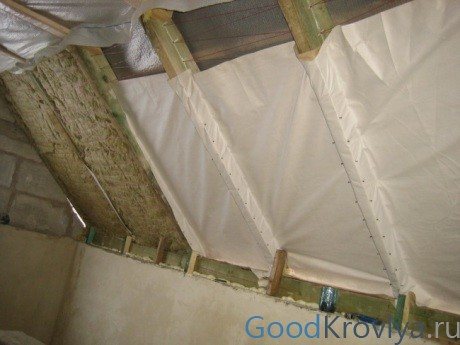

How to calculate the right amount
In order not to be mistaken with the volume of purchased algae for insulation, you can use one of the following methods:
- Method 1. The coefficient of thermal resistance of the part of the building that is planned to be insulated (roof, walls, floor) is calculated in accordance with the region of residence. To do this, it is enough to have basic knowledge in the field of construction, since the calculation itself is simple. After determining the coefficient, it becomes clear which layer the heat insulator will be laid.
- Method 2. If you have difficulty in determining the coefficients, you can use the proven old-fashioned method based on many years of experience.Living in the southern regions can get by with a dam, laid at the rate of 5-6 kg per square meter of roof. For the northern regions, this figure should not be lower than 9 kg per square meter.
Styling secrets or custom sandwich ↑
Roofing is always like a sandwich. By gradually laying out different layers of materials with different properties, a reliable and practical roof is obtained. It should be borne in mind that when using sea grass, the number of layers differs from the standard in a smaller direction, since this building material has the quality of an absorbent.
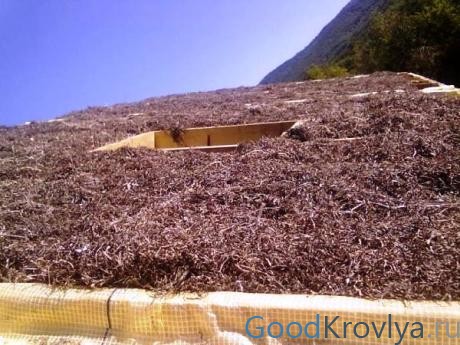

Before laying the insulation, lay a vapor barrier layer. This may be the most inexpensive specialty film. Then the damper itself is mounted, taking into account the required density determined by one of the above methods.
When laying the insulation in bulk, it should be carefully tamped, otherwise it may sag. Particular attention should be paid to the corners and various crevices, which are carefully closed. But to cover such material, imitating a classic sandwich, is impossible. Even with minimal temperature differences, the sorption properties of sea grass will contribute to the creation of the dew point, while at the same time degrading the level of thermal insulation.
Important! Some safety precautions must be observed when laying. The installation standard is the meter distance between the thermal insulation layer and the heating source. This is especially important when building a bathhouse, which is built from dry wood. Here, too, attention is paid to the construction of floors. They must be massive and durable, in no case should they be in direct contact with the damper.
The laid insulation does not tolerate mechanical stress, as it easily breaks, turning into dust. This should be taken into account during possible roof repairs.
Review of manufacturers of heaters made of sea grass ↑
On the market you can find many companies that produce and sell algae insulation. The most famous of them:
- SoTechS LLC, Moscow, Russia, is an exclusive supplier of Zostera algae from the Karkinitsky Bay from the Crimean coast. Sells damask in bales and by weight.
- LLC "Akvafitoresurs", Moscow, Russia, not only sells, but also independently harvests and processes sea grass.
- • LLC "Enterprise of Nonwovens" (PNM), Mytishchi, Moscow region, Russia, produces thermal insulation boards "Fitoizol".
- LLC "Tira", Moscow, Russia, on the basis of a scrubber, produces non-woven volumetric natural insulation Flaxan MIX, which also includes flax and lavsan. The material is produced in mats, size 1050x600x50. According to the conclusions of the Netherlands Institute of Building Biology and Ecology (NIBE), its service life is at least 75 years.
- LLC EKO-term, Ukraine (TM EKO), offers bales or mats, size 1000x600x100 (you can order an individual parameter).
- LLC "EkoKambud", Susanino, Ukraine, produces mats from zostera.


As you can see, there are plenty to choose from. Natural algae insulation has proven itself quite well. If you want to save money, go to the Crimean sea coast to collect zoster with your own hands. If you prefer to use certified products, contact experienced manufacturers who offer not only pure damask, but also its mixtures with various natural materials, such as lavsan and flax.
Insulation from "KAMKA" - myth or reality ?!
Seagrass is a resource whose use makes it possible to intensify industry and agriculture.
Sea herbs have a wide range of applications. They are considered a potential source of raw materials for the creation of food additives, are used in the production of medicines and serve as animal feed (mainly in foreign countries). Livestock eat both fresh and dried seaweed.
In addition, they are widely used for technical purposes, as packaging, padding and soundproofing material, resistant to fire and mechanical damage. Speaking about them, we mean the genus Zoster or Vzmornik (Kamka).
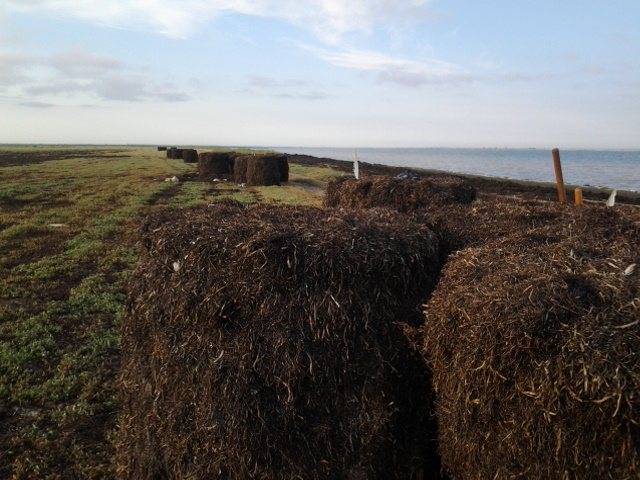

Blackjack. Distribution area
Even in ancient times, mattresses and upholstered furniture, as well as other household items, were stuffed with leaves of a scrub, used as packaging material. The leaves and shoots of zostera, which were carried to the shores by the generous sea, were used as fertilizer for the fields. And the Mexican Indians easily consumed damask in the form of flour.
Kamka belongs to the highest flowering plants that are rarely found in the seas and oceans (their list does not exceed two dozen). During the flowering period, the seagrass is covered with well-aimed white flowers.
Zostera with narrow ribbon leaves grows on sandy soil at a depth of 1-3 meters.
Skamorn is a perennial creeping plant with a flattened rhizome and the same stems, on which leaves are arranged in two rows. Zostera grows in calm waters of bays of different seas (Black, Japanese, Azov). On its meadows fish and sea animals graze, and sometimes even migratory birds.
Physical and chemical properties of Zostera
Hundreds of thousands of tons of sea grasses are washed ashore every year. Only 1% of this amount is used for production purposes. Seafood mainly consists of 2 types of zostera, which shed their leaves in August-September.


The chemical composition of sea grass is studied in detail in research institutes. Through the efforts of scientists, we learned that zostera contains extractive and nitrogen-containing substances, carbohydrates, minerals and lignin.
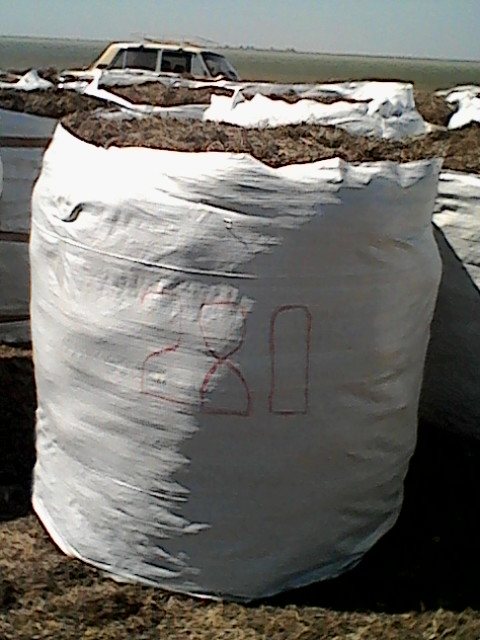

Like other marine plants, zostera is characterized by high ash content, because it accumulates large amounts of minerals. In kamka (as the common people call the grass zoster), micro- and macroelements are combined in optimal proportions. Zostera contains carotene, ascorbic acid and many B vitamins. The high content of iron, calcium, copper and cobalt, the presence of zinc and molybdenum in the composition make kamka an irreplaceable food product for animals.
Zosters in industry
Kamka turned out to be a very promising raw material, and its painstaking study ended with the development of a number of technological processes that led to the creation of means of mechanization and automation of the collection and processing of plants for the subsequent creation of industrial goods. After that, the first children's mattresses with damask filling and new modern heaters appeared. The Moscow Research Institute presented samples of thermal insulation boards for finishing, which became another argument in favor of using Zostera as a raw material in the production of building materials.
At one time, paper was made from damask, and now pectin is extracted from it, which is actively used to obtain marmalade, marshmallow and other gelled products. A large amount of pectins and hemicelluloses allows the Zoster to be used for briquetting and granulating compound feed (as a binder).
Zostera in construction
In Denmark, on the island of Lesso, algae houses have been standing for two centuries. Surprisingly, for the Danes, kamka turned out to be an ideal substitute for wood. It was easy to collect and dry - nature became a reliable supplier of raw materials. And now, centuries later, we can confidently assert that the Danes made the right choice. It is unlikely that we would have seen their creations if the inhabitants of the island used ordinary wood as decoration.
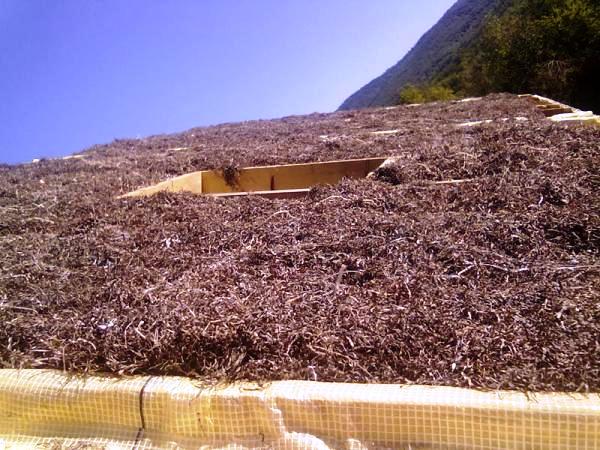

Zostera is the perfect insulation. It is not subject to decay, does not breed mold, pests are afraid of it. Sea grass improves the microclimate and perfectly neutralizes pollution.Over time, the filler becomes even denser and becomes water-repellent. The thermal insulation qualities of kamka are comparable to those of mineral wool.
In modern homes, seaweed is a wonderful filling for timber frames. Zosteroi insulate the roof and floor. If you lay mattresses stuffed with dry algae under the roof, you can “kill two birds with one stone”: insulate the building and create excellent sound insulation. The positive qualities of kamka as a building material (according to experts) remain unchanged for at least 150 years.
Benefits of seaweed insulation
Insulation made from zostera, which grows at the bottom of the seas, is often a stitching mat. It mainly consists of leaves mixed with a small number of stems, which are 20-100 centimeters long. Kamka is tinted brown-green and smells like the sea. It soothes the nervous system and does not lose its beneficial properties even when wet.
Insulation from sea grass is used for:
A high level of sorption humidification helps to maintain the air humidity that is favorable for humans. In addition, damask contains a large amount of iodine, which saturates the air. As you know, this element has a beneficial effect on the functioning of the thyroid gland.
Manufacturing process
Initially, the grass of Neptune is a small fibrous lump contaminated with sand. Often, individual plants are intertwined with each other, forming large piles that are inconvenient to handle and transport.
The merit of German scientists lies in the fact that they have developed effective methods for cleaning raw materials. Posidonia Oceanica lumps, when subjected to vigorous shaking, are perfectly cleaned of sand, which can then be used in other industries.
After purification, the algae are crushed. The resulting mass can serve as an excellent heat insulator. Its thermal conductivity coefficient is 20% lower than that of a planed bar.
The use of seaweed insulation can significantly reduce the cost of heating the premises in winter and air conditioning in the hot season.
